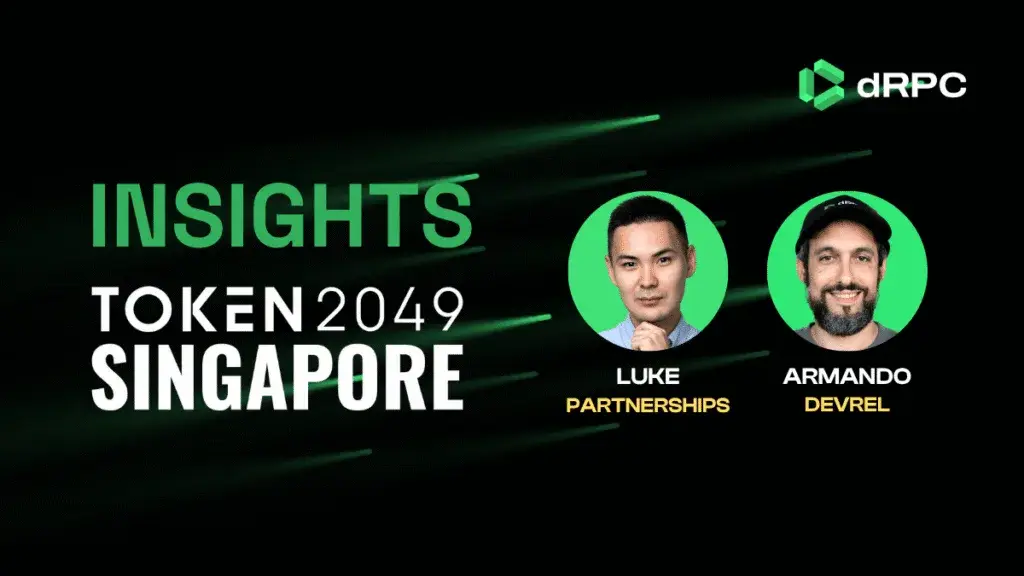From the buzzing floors of Token2049 Singapore to late-night conversations with builders, our team gathered a fresh perspective on where infrastructure, tooling, and RPC are heading. Below are seven major insights that tickled our thinking — with commentary from Luke (Partnerships) and Armando (DevRel / Lead Hackathon Ambassador).
If you’ll be in Buenos Aires at Devconnect Argentina, we’d love to catch up and dig deeper into these ideas in person.
Decentralization of infrastructure is front and center again
Michael Morgan (CEO of SwapKit) summed it up: “Nobody cares about decentralization until it does.” Luke emphasized that recent network outages have brought the issue of centralized RPC fragility squarely back into the conversation. Infrastructure must be resilient not just on paper but in real-world failure modes — and end-to-end decentralization (across providers, geographies, governance) is proving essential.
RPC pain is real — especially on Solana
In multiple conversations with dApp founders building on Solana, Armando heard a recurring theme: RPC instability remains a major bottleneck. Timeouts, rate limits, and regional routing inconsistencies plague many teams. The need for ultra-reliable, low-latency RPC across Solana’s nodes is still wide open — and a space we’re watching closely from dRPC’s stack roadmap.
Observability baked into infrastructure
Gone are the days when metrics, tracing, and alerts are afterthoughts. Builders are expecting all layers — RPC, data, caching — to ship with observability built-in by default. That makes tools like NodeHaus far more critical, not optional.
Modular / composable infrastructure continues to win
Instead of prepackaged monoliths, more teams favor modular, interoperable tooling. Swap in or out a cache, tracing layer, or routing module — that flexibility is becoming a default requirement for scaling stacks.
Edge & geo-aware deployments for latency gains
Deploying RPC nodes closer to the user — or routing queries via edge layers — is no longer optional for global applications. Every millisecond counts, and builders are prioritizing low-latency paths above all.
Failover & resilience > raw uptime
Several panels emphasized that surviving partial failures is more meaningful than just “99.99% uptime.” Infrastructure must be able to route, fallback, and absorb cascading failures without breaking the application layer.
Community & open source are catalysts, not just ideals
The pushback against opaque “infra-as-a-service” models was sharp. Many builders prefer open, extensible tooling over black-box APIs. That momentum aligns directly with dRPC’s choice to open source NodeCore, as well as collaborate with community contributors.
Meet us in Buenos Aires — Devconnect Argentina
We’ll be rolling into Devconnect Argentina with boots on the ground — Luke and Armando will be there to demo, discuss, and debate all things RPC, infrastructure, and censorship resistance. Let’s sit down and work together — see you in Buenos Aires.


